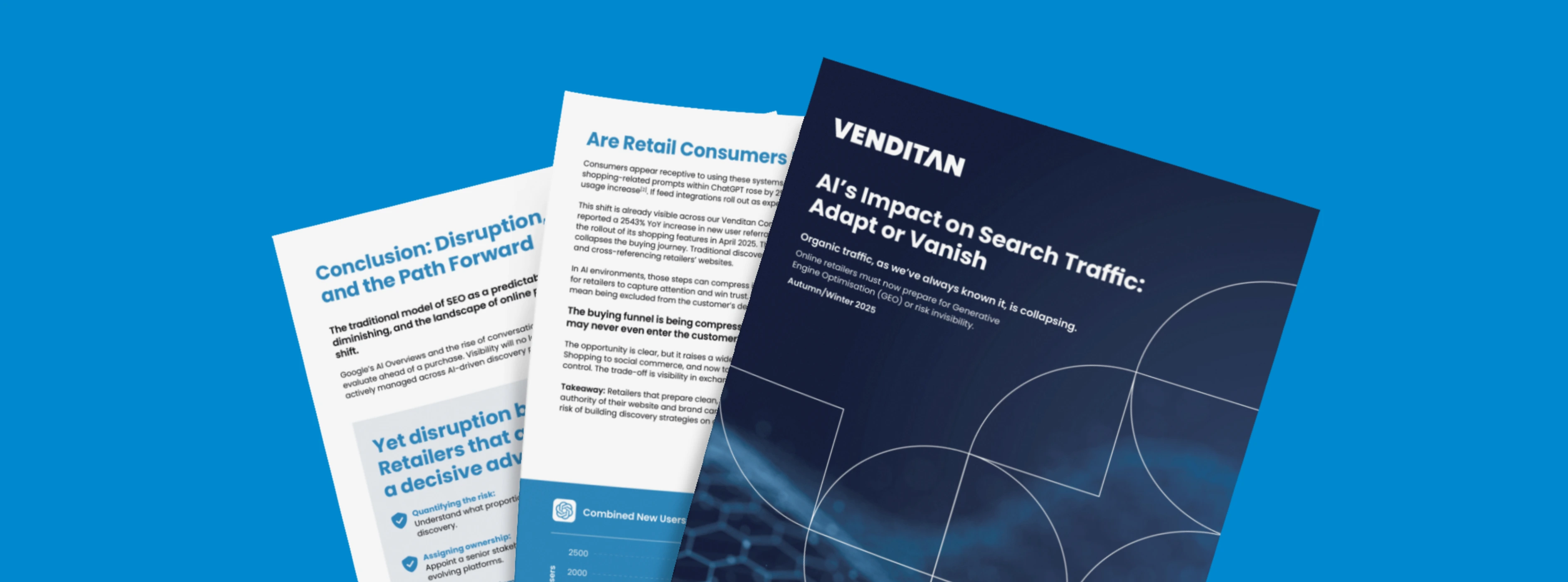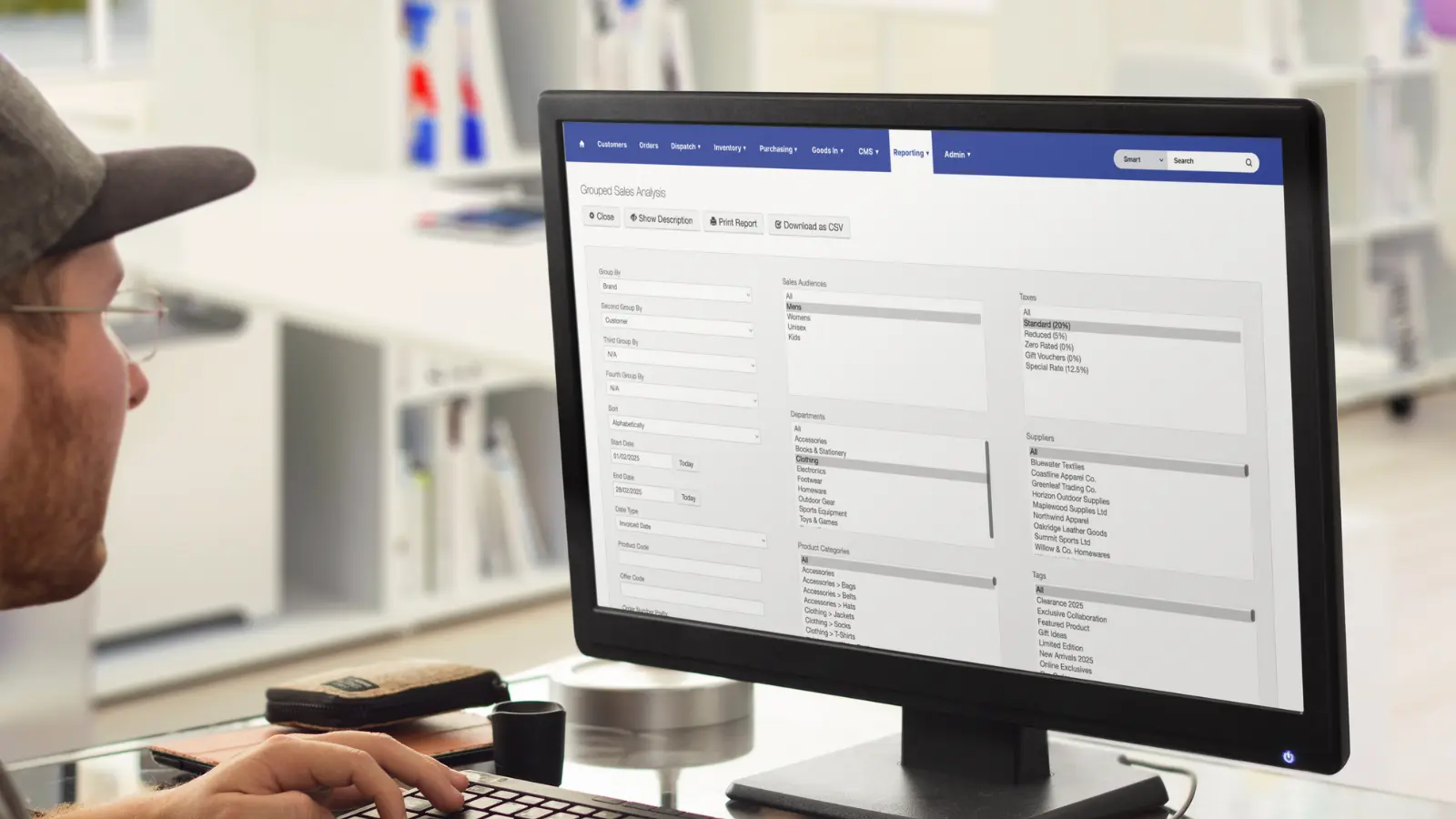With online shopping now taking up 26.5% of the market share, there are going to be demands placed on a brand’s digital presence.
There was a time not so long ago when you wouldn’t have been able to select a delivery window, even down to the specific hour that you wanted.
Imagine that?
Now, it’s expected.
To survive and thrive, retailers need to keep up to date with constantly changing notions of what a great eCommerce experience is and with 2023 in full stride, we are going to explore how those expectations are set to develop.
Delivering on the omnichannel promise
Omnichannel eCommerce has been floating around as a buzzword for a number of years, and with good reason, as it is a frictionless approach that all retailers should provide for their customers as standard.
That said, the implementation of what we would regard as a true omnichannel experience remains way behind the understanding of the concept. 64% of marketers claim that a lack of resources and investment is their top barrier to omnichannel, suggesting a resource barrier that is putting companies off.
This means that for some retailers, customers are still having to put in unnecessary effort when engaging with them. Missing data, knowledge gaps and conflict between in-store and eCommerce offerings remain prevalent and this only stands to increase customer frustration and decrease the chances of brand loyalty over time.
It seems we all know what omnichannel eCommerce is, and all accept that it is great for the business and the customer, but still lack the resources or the knowledge to achieve a solid implementation of the concept.
How we help
Our eCommerce platform enables you to manage every aspect of your online and physical operations from a single point of control. Rather than piecing together several expensive solutions from multiple vendors, which only serves to decrease the likelihood of a true omnichannel approach, we allow you to consolidate your operation and overheads into one platform, saving you money and headaches.

Genuine 24/7 customer support
For better or worse, the benchmark for excellent service extends beyond the traditional 9-5 working day limits. Customers don’t limit their queries to any set time, so it’s important that you are able to respond in a timely manner across the various platforms for feedback and communication.
Failure to adequately respond to customer queries is one of the leading reasons a customer leaves a negative review of their experience with a retailer.
Of course, this does not mean that you need to hire a member of staff and have them working every hour of the day - nor should a business owner be ‘always on’ with support emails coming through to their mobile phone.
If you have the resource to set up a dedicated customer support team, then that’s fantastic. In the meantime, you can leverage automated responses to ensure that the customer receives acknowledgement of their query and gains an understanding of when they are likely to hear back from you with more information:
“Hi [First Name],
Our customer support team will be back at [time] when they will pick up all new queries.
In the meantime, have you checked our Support FAQ guide? It may have the answer you need.”
That leads us to our next suggestion, which is to create a hub of informative content on your website and funnel users there in the first instance. This can be particularly useful for retailers that process a high number of orders, as it filters off some of the enquiries that can be answered by reading a simple guide, and leaves you to manually deal with the more complex customer support queries.
It is also important to mention that not all queries will come through your website or telephone. Customers expect you to be active and approachable across all of your digital assets. It is highly likely that, in the age of social media, you will receive enquiries through your direct messages on Facebook, Instagram, Twitter and so on. Most of these platforms allow you to set up automated responses, too.

Great delivery service
Amazon has set the standard with Prime, its ultra-reliable next-day delivery service. This has set unrealistic expectations of retailers in the eyes of consumers, who may consider all delivery experiences to match one of the biggest companies in the world.
As unfair as this is, it gives retailers a benchmark that they must aim towards. The delivery experience provided for customers is as important as anything else in their buying journey and can be broken down into the following deliverables:
- Offering flexible delivery options that meet different timescales
- Clear communication on those delivery options (pricing, courier)
- Regular updates throughout the delivery
- Confirmation of delivery
- A clear and easy returns process
Of course, Amazon are able to deliver so efficiently because they operate their own delivery service and this is a luxury that you will likely not be able to afford. It means that you will need to choose your courier partners wisely based on the services and integrations they are able to provide.
How we help
From delivery to payments and everything in between, Venditan Commerce is already connected to the partners you need to guarantee your success. Due to the flexible nature of our eCommerce platform, we can easily integrate with any existing technology providers you may have, and work with them to achieve bespoke solutions to meet any complex delivery requirements.
We are also integrated with ShipEngine, which allows our clients to easily integrate with over 70 UK and international carriers.
Flexible, easy payment options
Flexible payments allow customers to purchase a product and pay for it over time. It's similar to a credit card but comes without interest rates if the customer can make their payments within the agreed timeframe.
2022 saw a 59% increase in retailers working with Klarna, one of the leading providers of buy-now-pay-later (BNPL) products. A strong indication of the move towards offering these options as standard.
As of 2022, around 360 million people globally and more than 17 million consumers in the UK have used BNPL services.
It is also important that eCommerce websites offer a variety of eCommerce payment solutions. Online payment methods used to be restricted to users manually inputting their credit or debit card details, and then came the ability to save those details to one’s account with the retailer.
Now, the emergence of digital wallets and device-led payment functionality like PayPal and Apple Pay has provided retailers with more options to offer their customers.
Having these popular payment methods integrated with an online checkout has now become crucial. Users have their preferences, and if they are required to input their card details manually, it can lead to abandoned baskets.

Live shopping experiences
Facebook, Instagram, Twitter and YouTube all offer live streaming functionality, with some platforms even having the ability to tag products into the content. This gives sellers the ability to showcase their products in real-time with engaging and unique media, all whilst encouraging the thoughts and feedback of the viewers.
We recently explored TikTok Shop’s LIVE feature in detail. It is a function that has been successfully utilised by beauty brands and creators, who will apply the latest makeup products to a model or themselves on a live stream so viewers can engage with the demo and feel inspired to make the purchase.
Here's an example with model, Gigi Hadid going live on Instagram in partnership with Maybeline:
How we help
Venditan Commerce allows you to sync your product catalogue with your social accounts. You can then tag any showcased products during your live shopping events.
Be as transparent as necessary
Some online shoppers are looking for genuine companies with an obvious ‘human’ side to their business.
When a retailer maintains open and honest communications with their customers on products, pricing and their overall story, it gives an insight into what the business is all about and encourages the consumer to buy into something more than ‘just another online retailer.’
We are living in the age of information, where businesses are scrutinised for reviews and credibility.
Some consumers will want to know more about how you source your products and materials, what you stand for as a company and how you can prove that you are what you say you are.
If you can tell that story well, it can be incredibly powerful. In fact, over 90% of consumers say brand transparency is important to their purchase decisions.
Look after customer data
Cybersecurity is the word on everyone’s lips at the moment. Just this past week, JD Sports said that stored data relating to 10 million customers might be at risk after they were hit by a cyber-attack. Customers place trust in online retailers to protect their information and failure to do so will erode all credibility.
It is extremely important that you identify your sensitive assets and systems and have them regularly audited and improved to ensure they are protected against the latest cyber security threats. This includes your eCommerce platform of choice.
As we explored in a recent piece on cybersecurity culture, employee negligence is the leading cause of data loss incidents (40%).
Therefore, it is also important within a business that employees understand:
- Different online threats relevant to their field of work
- The critical nature of cybersecurity relative to their success
- The processes to report on and combat online threats
How we help
Our eCommerce platform is regularly audited and tested against the latest cybersecurity threats, and we are consistently updating our security measures to ensure the highest level of security.

3D showcasing
More of a trend than a necessity, some eCommerce websites are now using interactive, 3D showcasing functionality to help users engage with products on their product display pages.
A step up from the standard product images we have come to expect from eCommerce websites, the 3D rendering of products can help users gain more appreciation for products with shapes and sizes to be explored.
This is suited to a wide range of products, such as homeware, jewellery, glasses, footwear and vehicles.
It takes the eCommerce website experience one step closer towards virtual reality. Who knows? In the not-too-distant future, users may be able to pop a headset on and engage with a life-size virtualisation of the product they are interested in. But for now, expect to see more 3D experiences on your mobile and desktop screens.
Final thoughts
It is impossible to build a strategy that covers all bases in a calendar year, and you may have already had some thoughts of your own around the expectations of your target customer in 2023. As always, if you are an existing Venditan customer, please reach out to your account manager to begin that conversation and we will be able to advise and make recommendations.
Our recent posts
Keep up to date with the latest news and insight from the team at Venditan





.webp)



.webp)
%20(1).webp)


